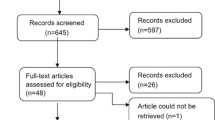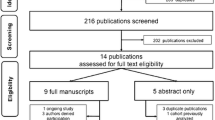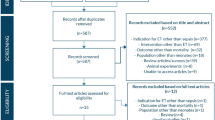Abstract
Pulmonary hemorrhage (PH) in neonates is associated with significant morbidity and mortality. Hemocoagulase is an established hemostatic agent and may be beneficial in neonates with severe PH.This systematic review was performed to investigate the clinical efficacy and safety of hemocoagulase therapy in preterm infants with Pulmonary hemorrhage (PH). The search strategy of the Cochrane Neonatal Review Group was used to determine outcomes following PH in neonates. The primary outcomes were mortality, duration of PH and length of mechanical ventilation. Other morbidities included: Respiratory Distress Syndrome, sepsis, intraventricular hemorrhage, necrotizing enterocolitis and bronchopulmonary dysplasia. The Cochrane Library, MEDLINE, EMBASE and CINAHL and bibliographies of identified trials were searched. The standard methods of the Cochrane Neonatal Review Group and van Tulder’s guidelines were followed independently by the authors to assess study quality, enter data and report outcomes. Typical treatment effects were calculated using fixed confidence intervals (CI). Heterogeneity tests were performed. Two ‘randomized’ controlled studies related to the role of hemocoagulase in neonates were identified: One for treatment of PH and the other for prevention of PH. All preterm infants’ of gestational age ≤ 32 weeks and birth weight ≤ 1500 g with PH were included in the study. A total of 48 and 72 preterm infants were enrolled and randomized into two groups in trial 1 and trial 2 respectively. Mortality risk was significantly lower in the treatment group (RR 0.52; 95%CI 0.31, 0.89, p < 0.02) when hemocoagulase was used as therapy compared to prophylactic use in neonates (RR 0.52; 95%CI 0.26, 1.07, p = 0.07). Duration of PH and mean duration of ventilation were shorter in both treatment and prophylactic groups. Use of hemocoagulase appeared to be effective in preventing PH in premature infants and reduced mortality. However, the potential risks of use of hemocoagulase including adverse effects and the effectiveness of hemocoagulase still remain uncertain due to the lack of good quality large randomized controlled studies. This needs further evaluation, before routine use can be recommended.


Similar content being viewed by others
References
Lin TW, Su BH, Lin HC, et al. Risk factors of pulmonary hemorrhage in very-low-birth-weight infants: a two-year retrospective study. Acta Paediatr Taiwan. 2000;41:255–58.
Lodha A, Shah PS, Hellmann J. Pulmonary haemorrhage associated with neonatal neurological disease. Heart Lung Circ. 2009;18:45–8.
Sly PD, Drew JH. Massive pulmonary haemorrhage: a cause of sudden unexpected deaths in severely growth retarded infants. Aust Paediatr J. 1981;17:32–4.
Pandit PB, Dunn MS, Colucci EA. Surfactant therapy in neonates with respiratory deterioration due to pulmonary hemorrhage. Pediatrics. 1995;95:32–6.
Berger TM, Allred EN, Van Marter LJ. Antecedents of clinically significant pulmonary hemorrhage among newborn infants. J Perinatol. 2000;20:295–300.
Tomaszewska M, Stork E, Minich NM, Friedman H, Berlin S, Hack M. Pulmonary hemorrhage: clinical course and outcomes among very low-birth-weight infants. Arch Pediatr Adolesc Med. 1999;153:715–21.
Kostelanetz AS, Dhanireddy R. Survival of the very-low-birth-weight infants after cardiopulmonary resuscitation in neonatal intensive care unit. J Perinatol. 2004;24:279–83.
Berger TJ, Chavez C, Tew RD, Navasca FT, Ostrow DH. Biological indicator comparative analysis in various product formulations and closure sites. PDA J Pharm Sci Technol. 2000;54:101–9.
Snashall PD. Pulmonary oedema. Br J Dis Chest. 1980;74:2–22.
Shi Y, Tang S, Li H, Zhao J, Pan F. New treatment of neonatal pulmonary hemorrhage with hemocoagulase in addition to mechanical ventilation. Biol Neonate. 2005;88:118–21.
Shi Y, Zhao J, Tang S, et al. Effect of hemocoagulase for prevention of pulmonary hemorrhage in critical newborns on mechanical ventilation: a randomized controlled trial. Indian Pediatr. 2008;45:199–202.
Kim SH, Cho YS, Choi YJ. Intraocular hemocoagulase in human vitrectomy. Jpn J Ophthalmol. 1994;38:49–55.
Palmisano PA. Klobusitsky's hemocoagulase in plastic surgery. Minerva Chir. 1975;30:686–92.
Valvo A. New treatment of ophthalmic herpes zoster with the hemocoagulating fraction of Bothrops jacaraca venom (Hemocoagulase). Ann Ottalmol Clin Ocul. 1968;94:1011–26.
Slounase. http://www.leespharm.com/en/product_launched_detail.php?id=3
Kornalik F. The influence of snake venom enzymes on blood coagulation. Pharmac Ther. 1985;29:353–405.
Kliegman RM, Walsh MC. Neonatal necrotizing enterocolitis: pathogenesis, classification, and spectrum of illness. Curr Probl Pediatr. 1987;17:213–88.
Shennan AT, Dunn MS, Ohlsson A, Lennox K, Hoskins EM. Abnormal pulmonary outcomes in premature infants: prediction from oxygen requirement in the neonatal period. Pediatrics. 1988;82:527–32.
Fetus and Newborn Committee of Canadian Pediatric Society: Routine screening cranial ultrasound examinations for the prediction of long term neurodevelopmental outcomes in premature infants. J Paediatr Child Health 2001; 39–52. Available at, 6.
van Tulder M, Furlan A, Bombardier C, Bouter L. Updated method guidelines for systematic reviews in the cochrane collaboration back review group. Spine (Phila Pa 1976). 2003;28:1290–9.
Pappin A, Shenker N, Hack M, Redline RW. Extensive intra alveolar pulmonary hemorrhage in infants dying after surfactant therapy. J Pediatr. 1994;124:621–6.
Altman DG, Deeks JJ. Meta-analysis, Simpson’s paradox, and the number needed to treat. BMC Med Res Methodol. 2002;2:3.
Contributions
All authors contributed to study design, data acquisition and writing the manuscript
Conflict of Interest
None.
Role of Funding Source
None.
Author information
Authors and Affiliations
Corresponding author
Rights and permissions
About this article
Cite this article
Lodha, A., Kamaluddeen, M., Akierman, A. et al. Role of Hemocoagulase in Pulmonary Hemorrhage in Preterm Infants: A Systematic Review. Indian J Pediatr 78, 838–844 (2011). https://doi.org/10.1007/s12098-010-0326-4
Received:
Accepted:
Published:
Issue Date:
DOI: https://doi.org/10.1007/s12098-010-0326-4




